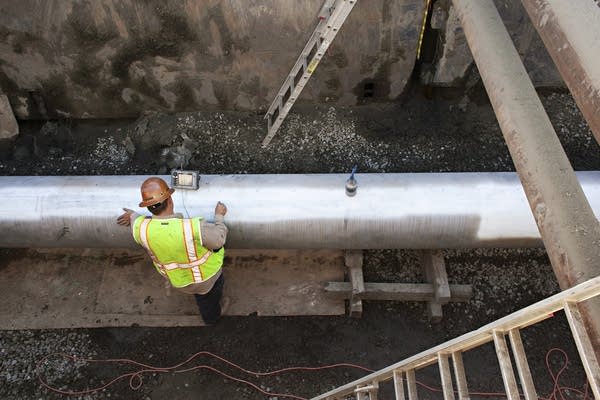Oil boom, pipeline safety put Enbridge on the spot

Technician Ryan Kringle of Acuren runs an ultrasound wand over a weld to check for flaws along a section of repaired pipe on Oct. 24, 2014, near Cohasset, Minn.
Ann Arbor Miller / MPR News
Go Deeper.
Create an account or log in to save stories.
Like this?
Thanks for liking this story! We have added it to a list of your favorite stories.


